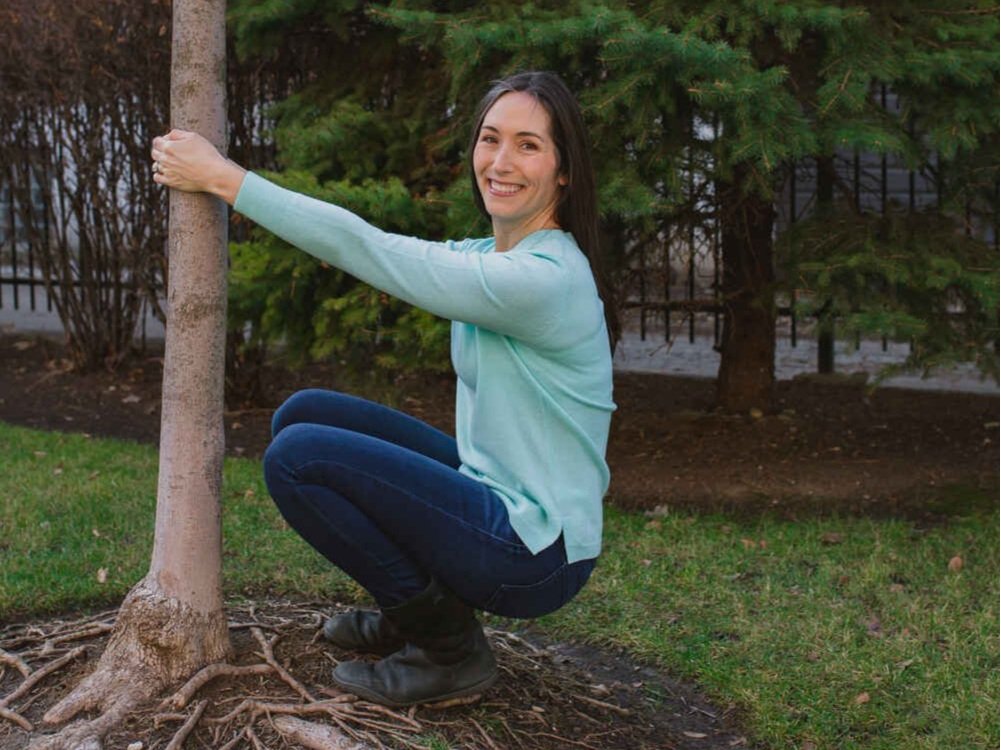Discover Your Body's True Potential with Natural Movement Exercises!
Embrace Natural Movement for Ultimate Fitness!
Are you tired of the same old workout routines that leave you feeling uninspired? Do you dream of achieving strength and flexibility in an invigorating and exciting way? Look no further! In this article, we're about to introduce you to 7 game-changing natural movement exercises that will completely transform your fitness journey.
Say goodbye to mundane gym sessions and hello to a dynamic approach that taps into your body's innate capabilities. These natural movement exercises replicate real-life motions like crawling, jumping, and running, boosting your strength and flexibility and enhancing your coordination and overall stability.
Picture a life where everyday activities are effortless, free from stiffness and discomfort. With these 7 exercises, you can unlock your body's incredible potential and unleash your inner athlete. Whether you're a fitness enthusiast, an athlete, or simply seeking improved physical well-being, these exercises are your gateway to reaching new fitness heights.
A New Way to Move: The Essence of Natural Movement Exercises
Shake off the monotony of traditional workouts and dive into natural movement exercises. These exercises embrace a departure from the usual structured routines. Instead of isolating individual muscle groups, they focus on integrating your entire body's movement. The result? You'll find yourself moving more naturally and fluidly, just as your body was designed.
Unlike traditional workouts that involve machines and weights, natural movement exercises exclusively utilize your body weight and gravity. This means everyone, regardless of fitness level, can partake without fancy equipment or costly gym memberships. These exercises are a refreshing and accessible approach, catering to both beginners and fitness veterans.
The Many Perks of Natural Movement Exercises
Beyond elevating strength and flexibility, natural movement exercises offer many other benefits. Let's take a look at some of the incredible advantages these exercises bring to the table:
Functional Strength Boost: With natural movement exercises engaging multiple muscle groups simultaneously, your functional strength for daily tasks and activities skyrockets. You'll notice an enhanced ability to lift objects, play sports, and navigate your everyday life more easily.
Flexibility and Mobility Gains: Your body's range of motion gets seriously upgraded thanks to natural movement exercises. These exercises require your joints and muscles to work through their complete range, leading to newfound flexibility and improved mobility. The result? You move gracefully and comfortably.
Masterful Balance and Coordination: Natural movement exercises challenge your coordination and balance by taking you through different planes of motion. This challenge enhances your body awareness, making you more agile and in control of your movements.
Cardiovascular Conditioning: Some natural movement exercises involve dynamic movements that increase your heart rate. This naturally provides a cardiovascular workout, enhancing your heart health and endurance over time.
Stress Relief and Mental Wellness: These exercises aren't just a gift to your physical well-being; they also work wonders for your mental state. By tuning into your body's movements and performing actions that feel instinctive and natural, you'll reduce stress, elevate your mood, and clear your mind.
The Science Backing Natural Movement Exercises
The foundation of natural movement exercises rests upon evolutionary biology and human physiology principles. Throughout history, our bodies evolved to perform a variety of movements like crawling, walking, running, jumping, and climbing. These movements were critical for survival and deeply ingrained in our DNA.
However, modern lifestyles and excessive technology have created a disconnect between us and these natural, instinctual movements. Natural movement exercises are designed to bridge this gap, helping us reconnect with the movements our bodies were meant to perform naturally.
Scientific research strongly supports the benefits of natural movement exercises. Studies published in journals like the Journal of Strength and Conditioning Research and the Journal of Physical Therapy Science highlight their positive impact on strength, power, balance, proprioception, and overall movement patterns.
The bottom line is that by embracing movements that echo our natural capabilities, we can tap into our body's full potential and achieve superior physical fitness.
Embarking on Your Natural Movement Journey
If you're ready to unlock your body's potential and embark on a journey toward increased strength and flexibility, here's a roadmap to get you started:
Educate Yourself: Dive into resources exploring natural movement exercises' principles and techniques. Books, videos, and online courses are fantastic ways to gain insight and knowledge.
Assess Your Fitness Level: BeforeBefore jumping into natural movement exercises, assess your fitness level. This understanding will guide your starting point and ensure safe progression. Consider consulting a fitness professional or undergoing a movement assessment for personalized guidance.
Begin Slowly and Progress Gradually: These exercises can be intense, especially if they're new to you. Start with foundational movements and gradually ramp up the intensity and complexity as you grow stronger and more flexible. Give your body time to adapt and recover as you listen to its cues.
Form and Technique Matter: Proper form and technique are the cornerstones of successful natural movement exercises. Focus on alignment, engage the right muscles, and execute each movement deliberately. Don't hesitate to seek guidance from a qualified instructor to ensure your form is spot-on.
Consistency Is Key: Consistency is your ally in the world of natural movement. Make these exercises a part of your daily routine—even a few minutes each day can significantly impact. The more you practice, the more seamless and instinctive your movements will become.
Remember, your journey into natural movement is a lifelong endeavor. Be patient, committed, and savor these exercises' transformative effects on your physical and mental well-being.
The Core 7: Essential Natural Movement Exercises for Your Arsenal
Now that you have grasped the concept and advantages of natural movement exercises let's dive into the core 7 exercises that will become your strength and flexibility allies. These exercises will challenge your body innovatively, allowing you to unveil your true potential. Begin with the basics and gradually work your way up.
Squat: A fundamental movement engaging your lower body muscles like the quads, hamstrings, glutes, and calves. Stand with feet shoulder-width apart, slightly turning toes out. Lower your body as if sitting in a chair, chest lifted, weight on heels. Return to the start and repeat.
Crawl: A primal movement boosting core stability and coordination. Start on all fours, hands under shoulders, knees under hips. Slightly lift knees off the ground and move by alternating opposite hand and foot. Maintain core engagement and controlled movements.
Lunge: This targets lower body muscles, including quads, hamstrings, glutes, and calves. Begin with feet hip-width apart. Take a big step forward with your right foot, lower into a 90-degree angle bend at both knees. Push through your right heel to return, then repeat with the left leg.
Jump: Dynamic movement for explosive power and cardiovascular fitness. Start with feet hip-width apart, knees slightly bent. Swing arms back and jump explosively, extending hips, knees, and ankles. Land softly, bend your knees upon impact, and immediately jump again.
Balance: Enhance stability, proprioception, and body awareness. Stand on one leg, lift the other off the ground, and bend at the knee. Find a focal point to aid balance and maintain the position as long as possible. Switch legs and repeat.
Climb: Engages upper body, core, and lower body muscles, fostering strength and coordination. Find a sturdy object (tree, rock) and climb using both arms and legs. Prioritize controlled movements and muscle engagement throughout.
Roll: Boost mobility, flexibility, and body awareness. Begin lying on your back with your knees bent and feet flat. Roll to one side, tuck chin to chest and curl into a ball. Return to the start and repeat on the other side.
Elevating Your Natural Movement Practice
As you become at ease with the 7 core natural movement exercises, take things up a notch by incorporating variations and intensifying your routine. Here's how to advance your natural movement practice:
Amplify Range of Motion: Gradually increase the range of motion for each exercise. For instance, deepen your squat by lowering your body closer to the ground, or extend the lunge distance for a more challenging experience.
Add Resistance: After mastering the bodyweight versions, introduce resistance to challenge your muscles. Resistance bands, weighted vests, kettlebells, or dumbbells can all be used to take things up a notch.
Combine Movements: Experiment by blending different natural movement exercises into more intricate sequences. Flow from crawl to jump or transition from lunge into a balance exercise. The combinations are endless!
Explore the Outdoors: Take your natural movement practice outdoors to experience different terrains and environments. This introduces fresh challenges and variations to your routine while enjoying a change of scenery.
Always listen to your body and progress at a pace that aligns with your comfort. Challenge yourself, but never compromise your safety or well-being.
Bringing Natural Movement Into Your Daily Routine
To reap the full rewards of natural movement exercises and unlock your body's potential, you need to weave them into your daily life. Here's how you can seamlessly integrate these exercises into your routine:
Set Practice Sessions: Dedicate specific time slots to practice natural movement exercises in your day or week. Treat these sessions with the same importance as traditional workouts, ensuring they become a non-negotiable part of your routine.
Embrace Daily Activities: Find opportunities to infuse natural movement into your day. Opt for stairs instead of elevators, challenge yourself to crawl or climb obstacles during outdoor adventures, and find ways to incorporate these exercises into your regular activities.
Seek Community: Join a local natural movement or parkour group to connect with like-minded individuals who share your passion. Training with others provides camaraderie, motivation, and valuable feedback to accelerate your progress.
Stay Consistent: Consistency is the golden rule for natural movement exercises. Strive to practice regularly—even a few minutes each day makes a difference. The more you practice, the more effortless and fluid your movements become.
Steer Clear of Common Mistakes in Natural Movement Exercises
While natural movement exercises are generally safe and inclusive, newcomers might stumble into common mistakes. Being aware of these pitfalls ensures you maximize the benefits while minimizing the risk of injury. Here are some blunders to avoid:
Skipping the Warm-up: Neglecting a proper warm-up raises the risk of injury. Before starting your natural movement practice, use dynamic stretches and mobility exercises to warm up your muscles and joints.
Ignoring Form and Technique: Solid form and technique are non-negotiable for optimal results in natural movement exercises. Avoid rushing through the movements and prioritize maintaining proper alignment while engaging the correct muscles.
Overtraining: Given their intensity, natural movement exercises can be demanding, especially for newcomers. Prevent overtraining by allowing your body ample time to rest and recover between sessions. Pay heed to your body's signals and adjust the frequency and intensity accordingly.
Disregarding Pain: These exercises should never cause pain or discomfort while challenging. If you experience sharp or persistent pain, halt the exercise immediately and consult a healthcare professional.
Equip Yourself with Resources and Tools
Ready to supercharge your natural movement practice? Here are some resources and tools to help you make the most of this exciting journey:
Dive into Books: Expand your knowledge with books like "Born to Run" by Christopher McDougall and "Move Your DNA" by Katy Bowman, offering insights into natural movement and its benefits.
Online Courses: Websites such as MovNat and GMB (Gold Medal Bodies) provide online courses tailored to developing your natural movement skills.
Explore YouTube Channels: Dive into YouTube channels dedicated to natural movement and bodyweight training, such as "Ido Portal" and "Animal Flow," for instructional videos and motivation.
Local Classes and Workshops: Seek out local natural movement or parkour classes and workshops. These hands-on sessions offer instruction and a chance to connect with fellow enthusiasts.
Unlock Your True Potential
The key to unlocking your body's potential is embracing natural movement exercises. Beyond strength and flexibility, these exercises offer a path to rediscovering your body's innate abilities. The 7 exercises we've explored here are just the start. You'll uncover new movements and variations that keep you engaged and excited as you progress.
Remember, natural movement isn't solely about physical fitness—it's about reconnecting with your body and embracing authentic and instinctive movements. By making natural movement exercises a part of your routine, you'll unleash your body's full potential and awaken your inner athlete.
So, are you ready to liberate yourself from the confines of traditional workouts? Are you prepared to explore your body's limitless capabilities? Embrace these natural movement exercises and elevate your fitness journey to uncharted heights. It's time to set yourself free and thrive in natural movement!







